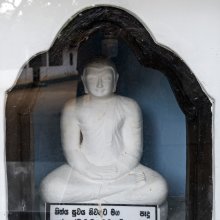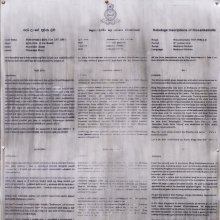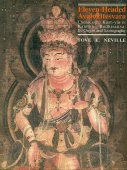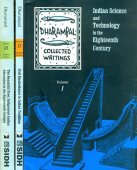Ta, Ṭā: 20 definitions
Introduction:
Ta means something in Hinduism, Sanskrit, Buddhism, Pali, the history of ancient India, Marathi, Jainism, Prakrit, Hindi, Tamil. If you want to know the exact meaning, history, etymology or English translation of this term then check out the descriptions on this page. Add your comment or reference to a book if you want to contribute to this summary article.
Images (photo gallery)
(+40 more images available)
In Hinduism
Vyakarana (Sanskrit grammar)
Source: Wikisource: A dictionary of Sanskrit grammar1) Ṭa (ट).—The consonant ट् (ṭ), the vowel अ (a) being added for facility of utterance; cf. अकारो व्यञ्जनानाम् (akāro vyañjanānām), T. Pr. I. 21;
2) Ṭa.—Short term, (प्रत्याहार (pratyāhāra)) standing for टवगे (ṭavage) or the lingual class of consonants, found used mostly in the Pratisakhya works; cf. RT. 13, V. Pr. I. 64, T. Pr. I. 27:
3) Ṭa.—tad. affix (अ) added to the word फल्गुनी (phalgunī) in the sense ' तत्र जातः (tatra jātaḥ)' e. g. फल्गुनी (phalgunī), cf. P. IV. 3.34, Vart. 2;
4) Ṭa.—Krt affix (अ) added to the root चर्, सृ (car, sṛ) and कृ (kṛ) under certain conditions; e. g. कुरुचरः, अग्रेसुरः, यशस्करी (kurucaraḥ, agresuraḥ, yaśaskarī) (विद्या (vidyā)) दिवाकरः, विभकरः कर्मकरः (divākaraḥ, vibhakaraḥ karmakaraḥ) etc. cf. P. III. 2.16-23.
--- OR ---
Ṭā (टा).—Case ending of the third case (तृतीया (tṛtīyā)) sing. number; cf. P. IV.1.2,
--- OR ---
1) Ta (त).—Personal ending of the third pers sing. Atm: cf. P. III. 4.78, which is changed to ते (te) in the perfect tense and omitted after the substitute चिण् (ciṇ) for च्लि (cli) in the aorist; cf. P.VI.4.04:
2) Ta.—Personal ending substituted for the affix थ (tha) of the Paras. 2nd pers. pl. in the imperative, imperfect, potential, benedictive, aorist and conditional for which, तात्, तन (tāt, tana) and थन (thana) are substituted in Vedic Literature, and also for हि (hi) in case a repetition of an action is meant; cf. P. III. 4. 85, 10l as also VII. 1. 44, 45 and III. 4. 2-5. cf P. III. 4. 85 and III. 4. 10I ;
3) Ta.—tad. affix त (ta) applied to the words कम् (kam) and शम् (śam) e. g. कन्तः, शन्तः (kantaḥ, śantaḥ), cf. P. V. 2. 138:
4) Ta.—tad. affix त (ta) applied to दशत् (daśat) when दशत् (daśat) is changed to श; cf. दशानां दशतां शभावः तश्च प्रत्ययः । दश दाशतः परिमाणमस्य संधस्य शतम् (daśānāṃ daśatāṃ śabhāvaḥ taśca pratyayaḥ | daśa dāśataḥ parimāṇamasya saṃdhasya śatam), Kas. on P. V. l. 59;
5) Ta.—.general term for the affix क्त (kta) of the past pass. part, in popular use:
6) Ta.—A technical term for the past participle affixes (त) क्त (kta) and तवत् (tavat) (क्तवतु (ktavatu)) called निष्ठा (niṣṭhā) by Panini; cf. P. I.1.26; the term त (ta) is used for निष्ठ (niṣṭha)I in the Jainendra Vyakararna.
--- OR ---
1) Tā (ता).—A technical term for the genitive case affix used in the Jainendra Vyakarana;
2) Tā.—The tad. affix तल् (tal) which is popularly called ता (tā) as the nouns ending in तल् (tal) i.e. त (ta) are declined in the fem. gender with the fem. affix आ (ā) added to them.

Vyakarana (व्याकरण, vyākaraṇa) refers to Sanskrit grammar and represents one of the six additional sciences (vedanga) to be studied along with the Vedas. Vyakarana concerns itself with the rules of Sanskrit grammar and linguistic analysis in order to establish the correct context of words and sentences.
Purana and Itihasa (epic history)
Source: archive.org: Puranic Encyclopedia1) Ta (त).—This letter means a thief or the inner down of a bird. (Agni Purāṇa, Chapter 348).
2) Ṭa (ट).—This letter means the act of singing. (Agni Purāṇa, Chapter 348).

The Purana (पुराण, purāṇas) refers to Sanskrit literature preserving ancient India’s vast cultural history, including historical legends, religious ceremonies, various arts and sciences. The eighteen mahapuranas total over 400,000 shlokas (metrical couplets) and date to at least several centuries BCE.
India history and geography
Source: Cologne Digital Sanskrit Dictionaries: Indian Epigraphical GlossaryTa.—ṉiyāḻ (SII 12), a tax. Note: ta is defined in the “Indian epigraphical glossary” as it can be found on ancient inscriptions commonly written in Sanskrit, Prakrit or Dravidian languages.
Source: Shodhganga: Vernacular architecture of Assam with special reference to Brahmaputra ValleyTa is a Tai Phake term referring to “boundary fence of bamboo”.—It appears in the study dealing with the vernacular architecture (local building construction) of Assam whose rich tradition is backed by the numerous communities and traditional cultures.

The history of India traces the identification of countries, villages, towns and other regions of India, as well as mythology, zoology, royal dynasties, rulers, tribes, local festivities and traditions and regional languages. Ancient India enjoyed religious freedom and encourages the path of Dharma, a concept common to Buddhism, Hinduism, and Jainism.
Languages of India and abroad
Pali-English dictionary
Source: Sutta: The Pali Text Society's Pali-English DictionaryTa°, (Vedic tad, etc.; Gr. tόn tήn tό; Lat. is-te, tālis, etc.; Lith. tás tā; Goth. pata; Ohg. etc. daz; E. that) base of demonstr. pron. for nt. , in oblique cases of m. & f. , & in demonstr. adv. of place & time (see also sa). ‹-› 1. Cases: Nom. sg. nt. tad (older) Vin. I, 83; Sn. 1052; Dh. 326; Miln. 25 & taṃ (cp. yaṃ, kiṃ) Sn. 1037, 1050; J. III, 26; Acc. m. taṃ J. II, 158, f. taṃ J. VI, 368; Gen. tassa, f. tassā (Sn. 22, 110; J. I, 151); Instr. tena, f. tāya (J. III, 188); Abl. tasmā (J. I, 167); tamhā Sn. 291, 1138; (J. III, 26) & tato (usually as adv.) (Sn. 390); Loc. tasmiṃ (J. I, 278), tamhi (Dh. 117); tahiṃ (adv.) (Pv. I, 57) & tahaṃ (adv.) (J. I, 384; VvA. 36); pl. Nom. m. te (J. II, 129), f. tā (J. II, 127), nt. tāni (Sn. 669, 845); Gen. tesaṃ, f. tāsaṃ (Sn. 916); Instr. tehi, f. tāhi (J. II, 128); Loc. tesu, f. tāsu (Sn. 670).—In composition (Sandhi) both tad- & taṃ- are used with consecutive phonetic changes (assimilation), viz. (a) tad°: (a) in subst. function: tadagge henceforth D. I, 93 taduṭṭhāya DhA. III, 344; tadūpiya (cp. Trenckner, Notes 77, 78=tadopya (see discussion under opeti), but cp. Sk. tadrūpa Divy 543 & tatrupāya. It is simply tad-upa-ka, the adj. ‹-› positive of upa, of which the compar. -superlative is upama, meaning like this, i.e. of this or the same kind. Also spelt tadūpikā (f.) (at J. II, 160) agreeing with, agreeable, pleasant Miln. 9; tadatthaṃ to such purpose SnA 565.—With assimilation: taccarita; tapparāyaṇa Sn. 1114; tappoṇa (=tad-pra-ava-nata) see taccarita; tabbisaya (various) PvA. 73; tabbiparīta (different) Vism. 290; DhA. III, 275; tabbiparītatāya in contrast to that Vism. 450.—(b) as crude form (not nt.) originally only in Acc. (nt.) in adj. function like tad-ahan this day, then felt as euphonic d, esp. in forms where similarly the euphonic t is used (ajja-t-agge). Hence ta- is abstracted as a crude (adverbial) form used like any other root in composition. Thus: tad-ah-uposathe on this day’s fast-day=to-day (or that day) being Sunday D. I, 47; Sn. p. 139 (explained as tam-ah-uposathe, uposatha-divase ti at SnA 502); tadahe on the same day PvA. 46; tadahū (id.) J. V, 215 (=tasmiṃ chaṇa-divase). tad-aṅga for certain, surely, categorical (orig. concerning this cp. kimaṅga), in tadaṅga-nibbuta S. III, 43; tadaṅga-samatikkama Nd2 203; tadaṅga-vikkhambhana-samuccheda Vism. 410; tadaṅga-pahāna DhsA. 351; SnA 8; tadaṅgena A. IV, 411.—(b) tan°: (a) as subst. : tammaya (equal to this, up to this) Sn. 846 (=tapparāyana Nd2 206); A. I, 150.—(b) Derived from Acc. use (like a b) as adj. is taṅkhaṇikā (fr. taṃ khaṇaṃ) Vin. III, 140 (=muhuttikā).—(g) a reduced form of taṃ is to be found as ta° in the same origin & application as ta-d- (under a b) in combination ta-y-idaṃ (for taṃidaṃ›taṃ-idaṃ›ta-idaṃ›ta-y-idaṃ) where y. takes the place of the euphonic consonant. Cp. in application also Gr. tou_to & tau_ta, used adverbially as therefore (orig. just that) Sn. 1077; Pv. I, 33; PvA. 2, 16 (=taṃ idaṃ), 76. The same ta° is to be seen in tāhaṃ Vv 8315 (=taṃ-ahaṃ), & not to be confused with tāhaṃ=te ahaṃ (see tvaṃ).—A similar combination is taṃyathā Miln. 1 (this is how, thus, as follows) which is the Sk. form for the usual P. seyyathā (instead of ta-(y)—yathā, like ta-y-idaṃ); cp. Trenckner, P. M. p. 75.—A sporadic form for tad is tadaṃ Sn. p. 147 (even that, just that; for tathaṃ?).—II. Application: 1. ta° refers or points back to somebody or something just mentioned or under discussion (like Gr. ou(=tos, Lat. hic, Fr. ci in voici, cet homme-ci, etc.): this, that, just this (or that), even this (or these). In this sense combined with api: te c’âpi (even these) Sn. 1058. It is also used to indicate something immediately following the statement of the speaker (cp. Gr. o(/de, E. thus): this now, esp. in adv. use (see below); taṃ kiṃ maññasi D. I, 60; yam etaṃ pañhaṃ apucchi Ajita taṃ vadāmi te: Sn. 1037; taṃ te pavakkhāmi (this now shall I tell you: ) Sn. 1050; tesaṃ Buddho vyākāsi (to those just mentioned answered B.) Sn. 1127; te tositā (and they, pleased ... ) ib. 1128.—2. Correlative use: (a) in rel. sentences with ya° (preceding ta°): yaṃ ahaṃ jānāmi taṃ tvaṃ jānāsi “what I know (that) you know” D. I, 88; yo nerayikānaṃ sattānaṃ āhāro tena so yāpeti “he lives on that food which is (characteristic) of the beings in N.; or: whichever is the food of the N. beings, on this he lives” PvA. 27.—(b) elliptical (with omission of the verb to be) yaṃ taṃ=that which (there is), what (is), whatever, used like an adj.; ye te those who, i.e. all (these), whatever: ye pana te manussā saddhā ... te evam ahaṃsu ... “all those people who were full of faith said” Vin. II, 195; yena tena upāyena gaṇha “catch him by whatever means (you like), ” i.e. by all means J. II, 159; yaṃ taṃ kayirā “whatever he may do” Dh. 42.—3. Distributive and iterative use (cp. Lat. quisquis, etc.): ... taṃ taṃ this & that, i.e. each one; yaṃ yaṃ passati taṃ taṃ pucchati whomsoever he sees (each one) he asks PvA. 38; yaṃ yaṃ manaso piyaṃ taṃ taṃ gahetvā whatever ... (all) that PvA. 77; yo yo yaṃ yaṃ icchati tassa tassa taṃ taṃ adāsi “whatever anybody wished he gave to him” PvA. 113. So with adv. of ta°: tattha tattha here & there (frequent); tahaṃ tahaṃ id. J. I, 384; VvA. 36, 187; tato tato Sn. 390.—(b) the same in disjunctivecomparative sense: taṃ ... taṃ is this so & is this so (too)=the same as, viz. taṃ jīvaṃ taṃ sarīraṃ is the soul the same as the body (opp. aññaṃ j. a. s.) A. V, 193, etc. (see jīva).—4. Adverbial use of some cases (locala, temporalb, & modalc): Acc. taṃ (a) there (to): tad avasari he withdrew there D. II. 126, 156; (b) taṃ enaṃ at once, presently (=tāvad-eva) Vin. I, 127 (cp. Ved. enā); (c) therefore (cp. kiṃ wherefore, why), that is why, now, then: S. II, 17; M. I, 487; Sn. 1110; Pv. I, 23 (=tasmā PvA. 11 & 103); II, 716; cp. taṃ kissa hetu Nd2 on jhāna.—Gen. tassa (c) therefore A. IV, 333. ‹-› Instr. tena (a) there (direction=there to), always in correl. with yena: where-there, or in whatever direction, here & there. frequent in formula denoting approach to a place (often unnecessary to translate); e.g. yena Jīvakassa ambavanaṃ tena pāyāsi: where the Mangogrove of J. was, there he went=he went to the M. of J. D. I, 49; yena Gotamo ten’upasaṅkama go where G. is D. I, 88; yena āvasathâgāraṃ ten’upasaṅkami D. II, 85 etc.; yena vā tena vā palāyanti they run here & there A. II, 33; (c) so then, now then, therefore, thus (often with hi) J. I, 151, 279; PvA. 60; Miln. 23; tena hi D. II, 2; J. I, 266; III, 188; Miln. 19.—Abl. tasmā (c) out of this reason, therefore Sn. 1051, 1104; Nd2 279 (=taṃ kāraṇaṃ); PvA. 11, 103; tato (a) from there, thence Pv. I, 123; (b) then, hereafter PvA. 39.—Loc. tahiṃ (a) there (over there›beyond) Pv. I, 57; (c) =therefore PvA. 25; tahaṃ (a) there; usually repeated: see above II. 3 (a).—See also tattha, tathā, tadā, tādi, etc. (Page 291)

Pali is the language of the Tipiṭaka, which is the sacred canon of Theravāda Buddhism and contains much of the Buddha’s speech. Closeley related to Sanskrit, both languages are used interchangeably between religions.
Marathi-English dictionary
Source: DDSA: The Molesworth Marathi and English Dictionaryṭa (ट).—m A blockhead or numskull. ṭa, pha, karīta vācaṇēṃ To read trippingly and blunderingly--a tyro or novice.
--- OR ---
ta (त).—The sixteenth consonant, and the first of the fourth or dental class; sounded as T in tube, tulip, tune, or more softly still. ta, as well as ṭa, and their aspirates tha & ṭha, must be acquired by the ear. The English T represents with exactitude neither ta nor ṭa, being medial betwixt the softness of the dental and the sharpness or hardness of the palatal. Further, T has with English speakers many shades of softness and hardness, and the English ear is heavy or full of kind allowance. Not so interchanged are ta & ṭa by the Native tongue; and not so indiscriminating or accommodating is the Native ear. To distinguish these letters accurately is all-important. The above notice, substituting for ta, da, for ṭa, ḍa, for the aspirates tha & ṭha, the aspirates dha & ḍha, and for T, D, applies, word for word, to the letter द. It may be profitable to observe here that the universal apprehension, by Native students of English, of the sound of the English letters T & D as exactly that respectively of their own ṭa & ḍa, and the practice, all but universal, by the teachers of English (whether of this country or of England) of either teaching or admitting this representation of T & D unto the exclusion, absolutely and altogether, of ta & da--are unwarranted by the case, and fraught with detriment to Native scholarship. As T & D are incorrectly and most offensively conveyed in vocal expression by ṭa & ḍa, and as Th (as in think, thing), and as standing for Dh (as in thus, that), would be quite insufferably rendered by ṭha & ḍha, whilst by ta & da they are re-uttered, although more softly and sweetly, yet, to no English ear, objectionably (e. g. compare, as competing equivalents for tune, tulip, dupe, due ṭyūna, ṭyūlipa, ḍyūpa, ḍyū & tyūna, tyūlipa, dyūpa, dyū, and, as equivalents for think, thus, compare ṭhiṅka, ṭhasa & thiṅka, thasa), it is suggested that, as representatives of T & D, ṭa & ḍa be disallowed and discarded, and ta & da (with the approximating tha for Th) be employed and taught--and this universally.
--- OR ---
tā (ता).—An affix to Sanskrit adjectives and nouns to form the noun abstract; as miṣṭatā, yōgyatā, dēvatā, suvarṇatā, from miṣṭa, yōgya, dēva, suvarṇa. All such nouns are feminine. As they are formed at will, and demand no explanation, they do not appear in this dictionary. See notice of the distinction betwixt tā & tva under tva.
Source: DDSA: The Aryabhusan school dictionary, Marathi-Englishṭa (ट).—The eleventh consonant.
--- OR ---
ta (त).—The sixteenth consonant.
Marathi is an Indo-European language having over 70 million native speakers people in (predominantly) Maharashtra India. Marathi, like many other Indo-Aryan languages, evolved from early forms of Prakrit, which itself is a subset of Sanskrit, one of the most ancient languages of the world.
Sanskrit dictionary
Source: DDSA: The practical Sanskrit-English dictionaryTā (ता).—Excellence, eminence; greatness.
Derivable forms: tām (ताम्).
See also (synonyms): utkṛṣṭatā.
--- OR ---
Ṭa (ट).—1 A sound like the twang of a bow-string.
2) A dwarf.
3) A quarter, a fourth part.
-ṭā 1 The earth.
2) An oath.
-ṭam A hollowed cocoanut.
Derivable forms: ṭaḥ (टः).
--- OR ---
Ta (त).—1 A tail.
2) The tail of a jackal.
3) The breast.
4) The womb.
5) The hip or flank.
6) A warrior.
7) A thief.
8) A wicked man.
9) An outcaste, a barbarian.
1) A Buddha.
11) A jewel.
12) Nectar.
13) (In prosody) One of the eight syllabic feet.
-tā, -tam 1 Passing, crossing.
2) Virtue, religious merit.
-tā Name of Lakṣmī.
Derivable forms: taḥ (तः).
--- OR ---
Ta (त).—4 P. (tāmyati, tānta)
1) To choke, be suffocated.
2) To be exhausted or fatigued; ललितशिरीषपुष्पहननैरपि ताम्यति यत् (lalitaśirīṣapuṣpahananairapi tāmyati yat) Mālatīmādhava (Bombay) 5.31.
3) To be distressed (in body or mind), be uneasy or pained, pine, waste away; प्रविशति मुहुः कुञ्जं गुञ्जन्मुहुर्बहु ताम्यति (praviśati muhuḥ kuñjaṃ guñjanmuhurbahu tāmyati) Gītagovinda 5; गाढोत्कण्ठा ललितलुलितैरङ्गकै- स्ताम्यतीति (gāḍhotkaṇṭhā lalitalulitairaṅgakai- stāmyatīti) Mālatīmādhava (Bombay) 15;9.33; तृष्णे मुधा ताम्यसि (tṛṣṇe mudhā tāmyasi) Mu.3.1; नार्यो मुग्धशठा हरन्ति रमणं तिष्ठन्ति नो वारितास्तत्किं ताम्यसि (nāryo mugdhaśaṭhā haranti ramaṇaṃ tiṣṭhanti no vāritāstatkiṃ tāmyasi) ... Amaruśataka 8.
4) To stop, become immovable; Rāj. T. 5.345.
5) To wish, desire. -Caus. (tamayati) To suffocate, choke.
Derivable forms: tam (तम्).
Source: Cologne Digital Sanskrit Dictionaries: Shabda-Sagara Sanskrit-English DictionaryṬa (ट).—The 11th consonant of the Nagri alphabet, and first of the 3rd class or cerebrals. It corresponds in sound to the letter T pronounced far back in the mouth, or as in true, and is expressed in the roman charactr by the accented letter T.
--- OR ---
Ṭa (ट).—m.
(-ṭaḥ) Sound. a particuiar sound, like the twang of a bow string. 2. A dwarf. 3. A quarter, a fourth, n.
(-ṭaṃ) A hollowed cocoanut, f. (ṭā) 1. The earth. 2. An oath, confirming an assertion by ordial, &c. E. ṭak to bind, &c. affix ḍa
--- OR ---
Ta (त).—m.
(-taḥ) 1. A thief. 2. Nectar, the food of the immortals. 3. An outcaste, a barbarian or Mlech'cha. 4. The flank, the hip or haunch. 5. A tail. 6. The womb. 7. A wicked man. 8. A tree. 9. A jewel. 10. A Buddha. n.
(-taṃ) 1. Passing, crossing. 2. Virtue, sancity. E. tṛ to cross, &c. affix ḍa.
Source: Cologne Digital Sanskrit Dictionaries: Cappeller Sanskrit-English DictionaryTa (त).—[pronoun] stem of 3^d [person or personal] (cf. sa; [neuter] tad q.v.) he, she, it; this, that (adj. & subst.), also = the def. article. Repeated, mostly in the plur. = this and that, various, several. ya ta (in the same sentence) whoever, anybody; ya (ya)
— ta ta or ya ka [with] cid
— ta whoever-he. — It often lays stress on an other pronoun of any [person or personal] separately expressed or contained in a verbal form, as taṃ tvā
— ahvaṣata thee (there) they have invoked, sa naḥ—bhava be thou to us, te vayam we here.
Source: Cologne Digital Sanskrit Dictionaries: Monier-Williams Sanskrit-English Dictionary1) Ṭa (ट):—1. ṭa the 1st cerebral consonant (pronounced like t in true, but properly by keeping back the tip of the tongue and slightly turning it upwards).
2) 2. ṭa m. sound, [cf. Lexicographers, esp. such as amarasiṃha, halāyudha, hemacandra, etc.]
3) a dwarf, [cf. Lexicographers, esp. such as amarasiṃha, halāyudha, hemacandra, etc.]
4) a quarter, 4th, [cf. Lexicographers, esp. such as amarasiṃha, halāyudha, hemacandra, etc.]
5) n. = karaṅka, [cf. Lexicographers, esp. such as amarasiṃha, halāyudha, hemacandra, etc.]
6) Ṭā (टा):—[from ṭa] f. the earth, [cf. Lexicographers, esp. such as amarasiṃha, halāyudha, hemacandra, etc.]
7) [v.s. ...] an oath, confirming an assertion by ordeal etc., [cf. Lexicographers, esp. such as amarasiṃha, halāyudha, hemacandra, etc.]
8) Ta (त):—1. ta the 1st dental consonant.
9) 2 [pronominal] base See tad
10) 3. ta m. a tail ([especially] of a jackal), any tail except that of Bos gaurus, [cf. Lexicographers, esp. such as amarasiṃha, halāyudha, hemacandra, etc.]
11) , the breast, [cf. Lexicographers, esp. such as amarasiṃha, halāyudha, hemacandra, etc.]
12) the womb, [cf. Lexicographers, esp. such as amarasiṃha, halāyudha, hemacandra, etc.]
13) the hip, [Horace H. Wilson]
14) a warrior, [cf. Lexicographers, esp. such as amarasiṃha, halāyudha, hemacandra, etc.]
15) a thief, [cf. Lexicographers, esp. such as amarasiṃha, halāyudha, hemacandra, etc.]
16) a wicked man, [cf. Lexicographers, esp. such as amarasiṃha, halāyudha, hemacandra, etc.]
17) a Mleccha, [cf. Lexicographers, esp. such as amarasiṃha, halāyudha, hemacandra, etc.]
18) a Buddha, [cf. Lexicographers, esp. such as amarasiṃha, halāyudha, hemacandra, etc.]
19) a jewel, [cf. Lexicographers, esp. such as amarasiṃha, halāyudha, hemacandra, etc.]
20) nectar, [cf. Lexicographers, esp. such as amarasiṃha, halāyudha, hemacandra, etc.]
21) n. crossing, [cf. Lexicographers, esp. such as amarasiṃha, halāyudha, hemacandra, etc.]
22) virtue, [cf. Lexicographers, esp. such as amarasiṃha, halāyudha, hemacandra, etc.]
23) Tā (ता):—[from ta] f. Lakṣmī, [cf. Lexicographers, esp. such as amarasiṃha, halāyudha, hemacandra, etc.]
Source: Cologne Digital Sanskrit Dictionaries: Yates Sanskrit-English Dictionary1) Ṭa (ट):—ṭ The first letter of the third or lingual or cerebral class.
2) (ṭaḥ) 1. m. Sound; a dwarf; a quarter (1/4.) f. (ḍā) The earth; an oath. n. A hollowed cocoanut.
3) Ta (त):—t The sixteenth consonant, first of the fourth or dental class.
4) (taḥ) 1. m. A thief; nectar; a barbarian; the hip; the womb; a tail; a tree; a bad man; a jewel. n. Crossing; virtue.
[Sanskrit to German]
Sanskrit, also spelled संस्कृतम् (saṃskṛtam), is an ancient language of India commonly seen as the grandmother of the Indo-European language family (even English!). Closely allied with Prakrit and Pali, Sanskrit is more exhaustive in both grammar and terms and has the most extensive collection of literature in the world, greatly surpassing its sister-languages Greek and Latin.
Hindi dictionary
Source: DDSA: A practical Hindi-English dictionary1) Ṭa (ट) [Also spelled t]:——the first letter of the third pentad (i.e. [ṭavarga]) of the Devnagri: alphabet.
2) Ta (त) [Also spelled t]:——the first letter of the fourth pentad (i.e. [tavarga]) of Devnagri: alphabet.
3) Tā (ता):—(ind) till, until, upto; a suffix used to form abstract nouns from adjectives (as [suṃdaratā, madhuratā] etc.); ~[umra] throughout life; ~[jidagī] till the end of life.
...
Prakrit-English dictionary
Source: DDSA: Paia-sadda-mahannavo; a comprehensive Prakrit Hindi dictionary1) Ta (त) in the Prakrit language is related to the Sanskrit word: Tat.
2) Ta (त) also relates to the Sanskrit word: Tvat.
3) Tā (ता) also relates to the Sanskrit word: Tad.
4) Tā (ता) also relates to the Sanskrit word: Tadā.
5) Tā (ता) also relates to the Sanskrit word: Tahi.
6) Tā (ता) also relates to the Sanskrit word: Tad.
Prakrit is an ancient language closely associated with both Pali and Sanskrit. Jain literature is often composed in this language or sub-dialects, such as the Agamas and their commentaries which are written in Ardhamagadhi and Maharashtri Prakrit. The earliest extant texts can be dated to as early as the 4th century BCE although core portions might be older.
Kannada-English dictionary
Source: Alar: Kannada-English corpusṬa (ಟ):—
1) [noun] (gen. pronounced with the vowel 'ಅ') the twenty-fifth letter of Kannaḍa alphabet and the eleventh consonant.
2) [noun] a symbol for the number one.
--- OR ---
Ta (ತ):—
1) [noun] (gen. pronounced with the vowel 'ಅ') the thirtieth letter of Kannaḍa alphabet and the sixteenth consonant.
2) [noun] a symbol for the number six.
3) [noun] (pros.) a syllabic feet consisting of two long syllables followed by a short one (—u); antibacchius.
Kannada is a Dravidian language (as opposed to the Indo-European language family) mainly spoken in the southwestern region of India.
Tamil dictionary
Source: DDSA: University of Madras: Tamil LexiconṬa (ட) . The compound of ட் [d] and அ. [a.]
--- OR ---
Ṭā (டா) . The compound of ட் [d] and ஆ. [a.]
--- OR ---
Ta (த) . The compound of த் [t] and அ. [a.]
--- OR ---
Ta (த) noun Symbol representing the sixth note of the gamut; தைவதமாகிய விளரியிசையி னெழுத்து. (திவா.) [thaivathamagiya vilariyisaiyi nezhuthu. (thiva.)]
--- OR ---
Ta (த) noun < da. (யாழ்ப்பாணத்து மானிப்பாயகராதி [yazhppanathu manippayagarathi])
1. Brahmā, as creator; பிரமன். [piraman.]
2. Kubera, the Lord of Wealth; குபேரன். [kuperan.]
--- OR ---
Tā (தா) The compound of த் [t] and ஆ. [a.]
--- OR ---
Tā (தா) [tātal [tarutal]] 13 transitive verb [Kanarese, Malayalam: tā.]
1. To give, as to equals; ஒப்போனுக்குக் கொடுத்தல். [opponukkug koduthal.] (தொல். சொல். [thol. sol.] 446.)
2. To grant, bestow; ஈந்தருளுதல். [intharuluthal.]
3. To instruct; உபதேசித் தல். நாதனாரருள்பெறு நந்தி தந்திட [upathesith thal. nathanararulperu nanthi thanthida] (கந்தபு. அவையடக். [kanthapu. avaiyadag.] 8).
4. To serve; பரிமாறுதல். இன்சோறு தருநர் [parimaruthal. insoru tharunar] (பத்துப்பாட்டு: மதுரைக்காஞ்சி [pathuppattu: mathuraikkanchi] 535).
5. To cause to get; அடை வித்தல். பொருபடைதரூஉங் கொற்றமும் [adai vithal. porupadaitharuung korramum] (புறநானூறு [purananuru] 35, 25).
6. To create, form, construct; படைத்தல். தருமதேவதை . . . தருதலாற் றருமத்தீர்த்தம் [padaithal. tharumathevathai . . . tharuthalar rarumathirtham] (சேதுபுராணம் சக்கர. [sethupuranam sakkara.] 14).
7. To beget, generate, procreate; மகப்பெறுதல். புயங்கமெலாஞ் சுதையென்னு மாது தந்தாள் [magapperuthal. puyangamelagn suthaiyennu mathu thanthal] (கம்பராமாயணம் சடாயுகாண். [kambaramayanam sadayugan.] 28).
8. To produce, compose; நூல் முதலியன இயற்றுதல். சடையன் வெண்ணெய்நல் லூர்வயிற் றந்ததே [nul muthaliyana iyarruthal. sadaiyan venneynal lurvayir ranthathe] (கம்பார. சிறப்புப். [kambaramayanam sirappup.] 11).
9. To denote; express; உணர்த்துதல். இறந்தகாலந் தருந்தொழி லிடைநிலை [unarthuthal. iranthagalan tharunthozhi lidainilai] (நன். [nan.] 142).
10. To acquire, gather; சம்பாதித்தல். தாளினாற் றந்த விழுநிதியும் [sambathithal. thalinar rantha vizhunithiyum] (திரிகடுகம் [thirigadugam] 47).
11. To capture; கைப்பற்றுதல். ஆரெயில் பலதந்து [kaipparruthal. areyil palathanthu] (புறநானூறு [purananuru] 6, 14).
12. To call, summon; அழைத்தல். மற்றவட் டருக வீங்கென [azhaithal. marravad daruga vingena] (சிலப்பதிகாரம் அரும்பதவுரை வழக்குரை. [silappathigaram arumbathavurai vazhakkurai.] 45).
13. To yield, bring forth, as trees; மரமுதலியன பலன் கொடுத் தல். [maramuthaliyana palan koduth thal.] (W.) — aux. An auxiliary added to verbs; ஒரு துணைவினை. வண்டாயத் திரிதருங் காலத்து [oru thunaivinai. vandayath thiritharung kalathu] (நாலடியார் [naladiyar], 284).
--- OR ---
Tā (தா) noun < தாவு-. [thavu-.]
1. Strength, might; வலிமை. தாவே வலியும் வருத்தமு மாகும் [valimai. thave valiyum varuthamu magum] (தொல். சொல். [thol. sol.] 344).
2. Pain, distress, affliction; வருத் தம். தாவிடுமி னென்றான் [varuth tham. thavidumi nenran] (சீவகசிந்தாமணி [sivagasindamani] 749).
3. Decay, destruction; கேடு. [kedu.] (தொல். சொல். [thol. sol.] 344, உரை. [urai.])
4. Attacking, rushing, jumping; பாய்கை. கருங் கட் டாக்கலை [paykai. karung kad dakkalai] (தொல். சொல். [thol. sol.] 344, உரை [urai]).
5. Hostility; பகை. (சூடாமணிநிகண்டு) [pagai. (sudamaninigandu)]
6. Fault, blemish; குற்றம். தாவில் வெண்கவிகை [kurram. thavil venkavigai] (கம்பராமாயணம் கோலங்காண். [kambaramayanam kolangan.] 1).
7. Defect, deficiency; குறை. தாவரும்பக்க மெண்ணிரு கோடியின் றலைவன் [kurai. thavarumbakka menniru kodiyin ralaivan] (கம்பராமாயணம் இலங்கைக்கேள். [kambaramayanam ilangaikkel.] 40).
Tamil is an ancient language of India from the Dravidian family spoken by roughly 250 million people mainly in southern India and Sri Lanka.
See also (Relevant definitions)
Starts with (+9980): Bodhidharma, Jarenere, Lower Egypt, Ta cham diang, Ta chi, Ta ching, Ta cige, Ta det, Ta deu, Ta feng tzu, Ta gboyo, Ta huang, Ta kai dong, Ta klai, Ta kluang, Ta kouang, Ta lang, Ta li tzu, Ta luup, Ta mai.
Ends with (+9980): A go ta, A ke ta, A ko ta, A-bata, A-pa-ra-dzi-ta, A-rko-ta, Aalkata, Aamoi-lota, Aamraata, Aamrata, Aananta Vrata, Aapata, Aapta, Aashta, Aata, Aath ka patta, Aatmanirbharta, Aba-ta, Ababata, Ababhrata.
Full-text (+19468): Avanata, Ajata, Adhita, Anudita, Anucita, Anavasthita, Atata, Khallita, Udgata, Adhikrita, Paripluta, Vyudhakankata, Vilokita, Peta, Parinita, Bhakshita, Ajnata, Unnata, Vikata, Anayasakrita.
Relevant text
One of your search terms exceeds the minimun character amount per search term. This amount currently equals 2.
No search results for Ta, Ṭa, Tā, Ṭā, Tā°, Da, Tha, Thaa, Dha, Daa; (plurals include: Tā°s, Thas, Thaas, Dhas, Daas) in any book or story.
Related products









